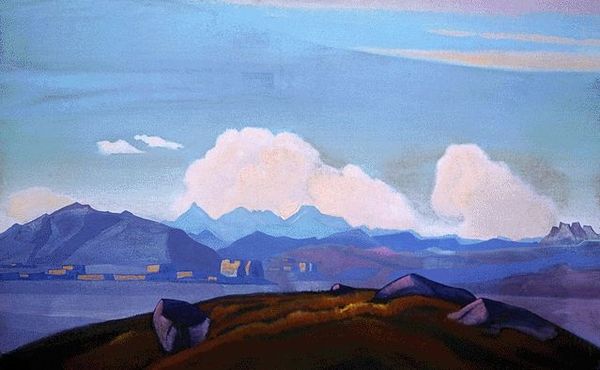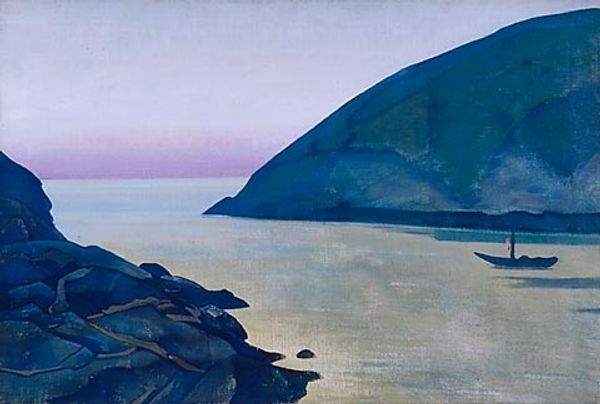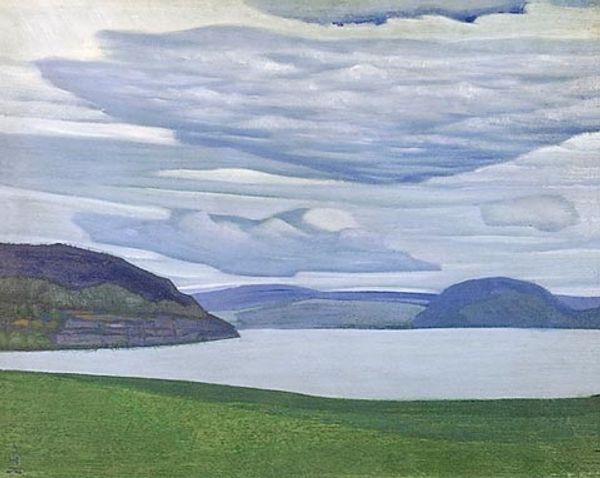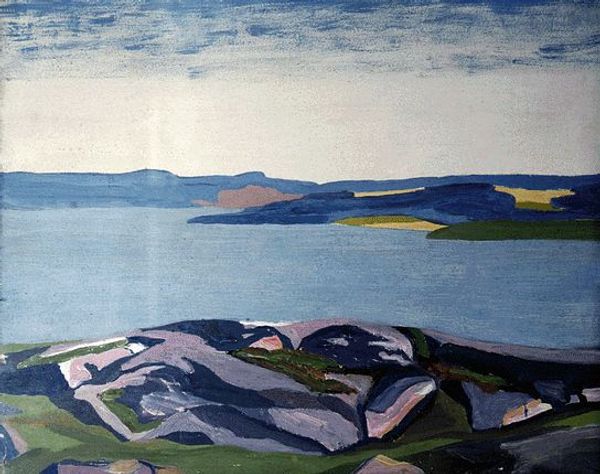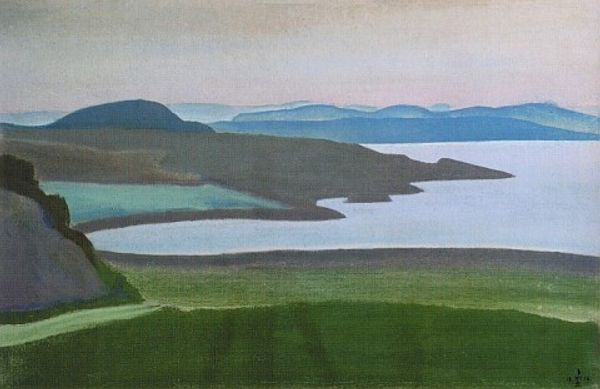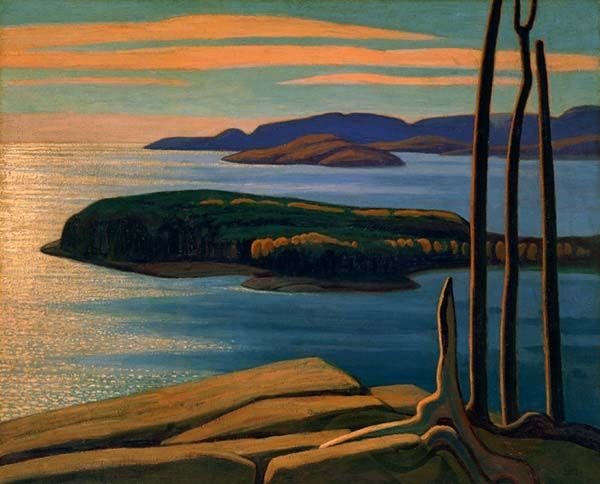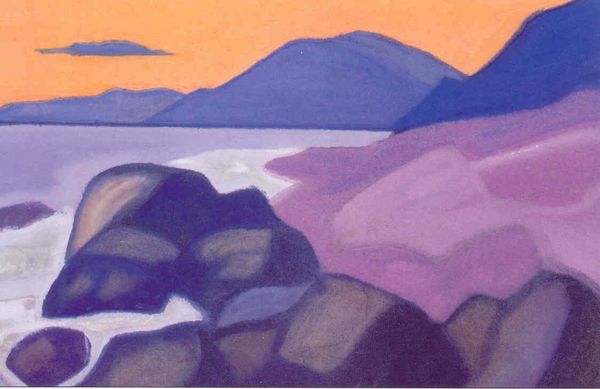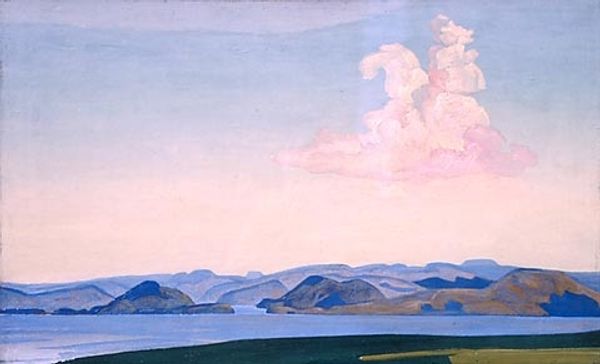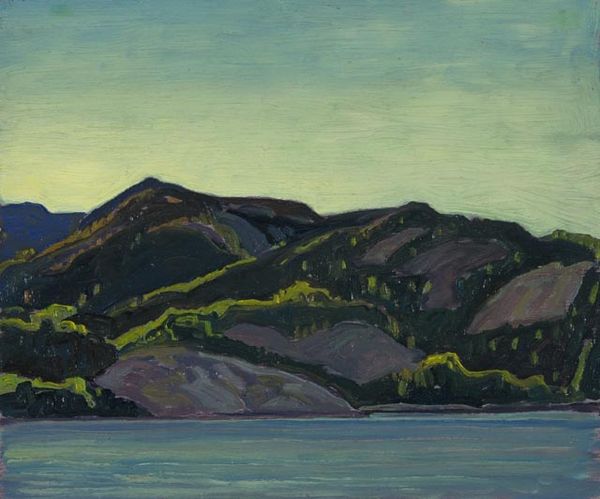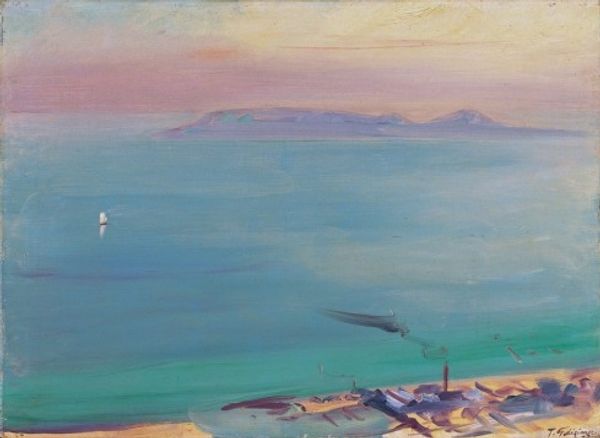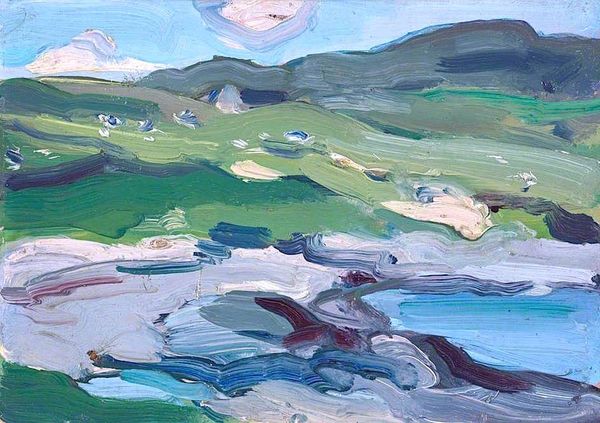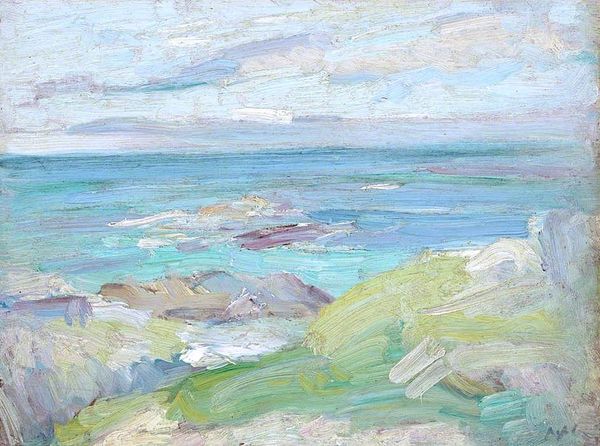
Copyright: Public domain
Curator: “Messengers of Morning,” an oil on canvas painted in 1917 by Nicholas Roerich, presents a serene vista. Editor: My immediate reaction is a sense of cool tranquility. The palette of blues and greens evokes a crisp, early morning atmosphere, that feels inviting, although there are no figures. Curator: Indeed. Roerich was deeply influenced by symbolism and Theosophy, and his landscapes often depict not just geographical places but spiritual states. The muted colors, the simplified forms of the mountains and the sky, hint at something beyond the immediate, physical reality. One can situate this piece, given its emphasis on nature's transcendence, as engaging with ecospiritual themes prevalent among symbolist artists. Editor: I'm particularly interested in the application of the oil paint. It appears to be applied in layers, almost like watercolor washes. The layering gives a translucent quality, creating depth but simultaneously flattening the pictorial space. It almost transcends being just oil; the labor isn't ostentatious; it asks us to appreciate it for a purpose other than demonstrating craft skill. The color choice, it really is a dance between cool hues. Curator: Roerich’s artistic pursuits went hand in hand with cultural activism and his dedication to promoting peace and understanding across cultures through artistic endeavors. As such, it is useful to consider how the flattening effect also draws inspiration from traditional icon painting—a move aligned with Roerich's wider concern for Russia's cultural heritage and its spiritual significance in troubled times. Editor: Seeing that, the flattening gives it almost the effect of a backdrop. A stage set before our real world. As we’re seeing, the apparent simplicity belies a complex engagement with material practices and their relationship to production and history. I appreciate how you’ve linked this landscape to cultural heritage because you really start thinking what elements, outside of the nature itself, are influencing the work. Curator: Exactly. By examining the sociopolitical dimensions that influenced Roerich's landscape, we glean new insights into the creative and intellectual networks that propelled his commitment to exploring a holistic worldview. Editor: Thinking about the bigger picture has really brought into focus what I value from this artwork and what this material process actually means for us. Curator: Indeed, these intersectional lenses through which to read his work are imperative for appreciating how this peace-oriented painting speaks to our current moment.
Comments
No comments
Be the first to comment and join the conversation on the ultimate creative platform.
